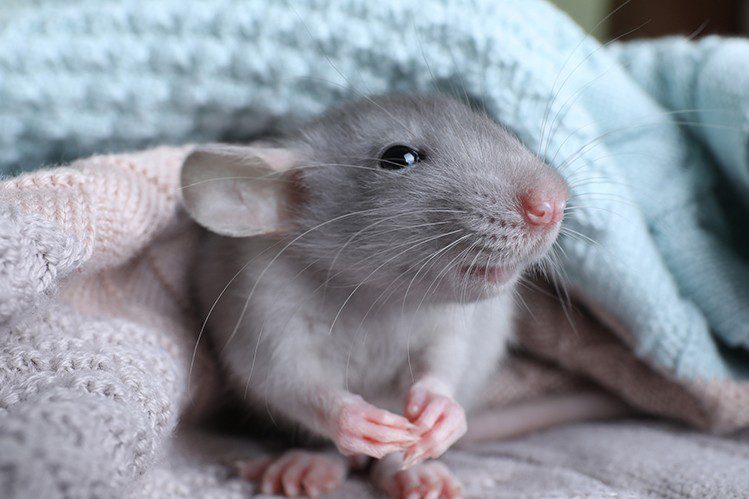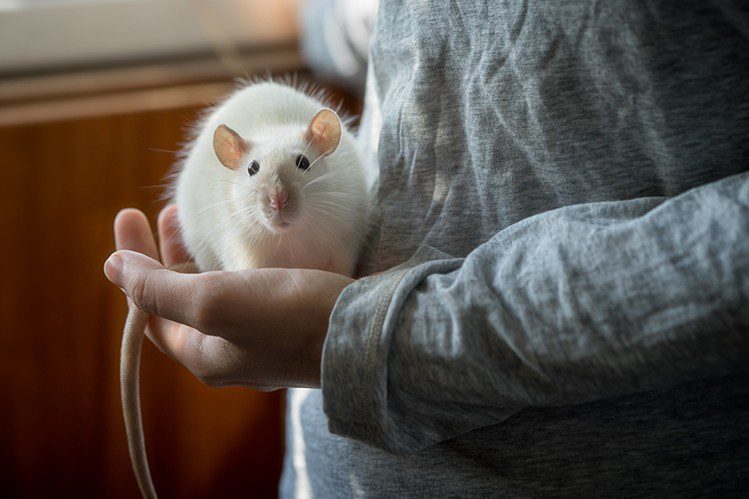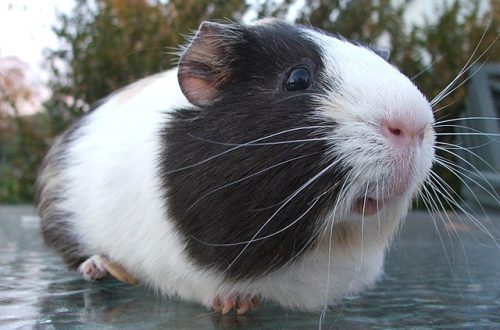
How to tame a rat?
Rat care is a pleasant chore for owners of cute furry rodents. But building a good relationship with a pet means nothing less than a cozy cage or high-quality pet food. Without trusting communication and mutual sympathy, you will not be able to start either games or training. We have collected for you recommendations that will help win the heart of your ward.
Prepare in advance for the arrival of a new family member in the house. It will be much easier for a rat to survive the stress of moving if a spacious cage with filler, a hammock, a house or other similar shelter, a tray, a drinker and a bowl of food awaits it in the new house. Put your pet in a cage and let him be alone with you for at least the first day. You still have time to play, now the most important thing is to let the rat recover and look around.
In the cage, the rat should feel completely safe. Make sure that the acquaintance of the decorative rat with other pets that live in your home takes place after adaptation to a new place. It is important to place the cage as far away from noisy electrical appliances as possible and out of direct sunlight.
But do not leave the new ward in complete isolation. Visit him periodically and talk to him quietly and kindly. In order for the rat to get used to your voice faster, you can talk on the phone in the room where the pet’s cage is. Keep in mind that your conversation should not be overly emotional.

From the second day, you can slowly begin to feed your pet with treats through the rods. Flatly refuses to take a piece of an apple with his paws from your fingers? Well, try leaving the treat in the cage for the first two or three days. However, it is important that the rat sees that it is you who bring the goodies.
Don’t overfeed your pet! A third of a thin apple slice or a thimble-sized piece of carrot is a very filling snack for such a tiny creature.
You will certainly face the question of how to accustom a rat to your hands. Start acting slowly. Just a couple of days after the arrival of the pet in the house, try to gently put your hand in the cage. Let the rat sniff your hand, lick your fingers, bite your palm. This way she can get to know you better and make sure you’re not a threat.
If your delicate attempt to communicate with your pet begins to bite painfully, make a sound like a displeased squeak and remove your hand. So you show a negative reaction to unwanted behavior. Even if the pet does not make contact, bites, you do not need to raise your voice. And physical punishment is completely unacceptable. Most likely, your ward just needs a little more time to adapt.
When your pet is willing to take a treat from your fingers and responds normally to the presence of your hand in the cage, try feeding him something tasty from the palm of your hand. If, time after time, the rat will steal a tidbit from his hand and eat it in his corner, try treating him with unsweetened yogurt. To taste it, the rat will have to climb onto your hand.
In parallel, begin to accustom the ward to strokes. This is one of the components of how to accustom a rat to hands. Start with a light single finger stroke on the back. If your pet takes it well, give him a treat. Then increase the number of strokes, let the rat see that your gentle touches precede the treat.

The treat will help your pet remember its name and get used to you faster. It is better to choose a sonorous short name with hissing sounds for the ward: for example, Foxy, Max, Fluff. When the pet responds to the nickname and approaches your hand, give him a treat. The fluffy smartie will quickly figure out that there is a connection between your kind intonation of voice, his name and getting a treat.
So you can not only help your pet remember your name, but also ensure that he will respond to your call, come to the cage door when you need it. And you will create an additional positive association with your communication.
Do not forcefully take a rat out of its cage, especially if it is lying in a hammock or hiding in a house. But if the pet decides to leave the cage and take a walk, provide such an opportunity. Always keep your rat in sight and don’t let it roam outside the cage for more than two hours a day. It’s best to move your pet to a safe play area right away or let him walk on the couch or bed. Do not forget to lay an old blanket or an unnecessary towel, as a pet can mark the territory during a walk.
To lure a ward back into the cage, rustle his food bowl in the cage while pouring food into it. Call your pet by name.
Fancy rat owners warn that the first attempts to pick up a rat should be like scooping up a handful of water. But the pet can instinctively perceive the movement from above as a threat.
If a pet crawls over your arms, shoulders, clothes, this is a good sign. Your pet has gained confidence in you and is studying you.
Decorative rat constantly needs communication. If you are away from home all day, it will be very useful to have a second rat to make a same-sex couple – two friends or two girlfriends. You should not have heterosexual pets if you are not going to professionally breed decorative rats.
Include your pet in your daily activities. You can read a book or watch your favorite series with a rat on your shoulder or in your bosom. Your ward will definitely appreciate the fact that you always find time for him.
Domesticating a rat is a process that can take anywhere from a few days to a little over a month. Much depends on the nature and sociability of a particular pet. With healthy rats that were born in the nursery and from the first days communicated with breeders, socialized, there will be no big problems in communication.
Remember that rats are smart and quick-witted. They are able not only to remember their nicknames, but also to understand by your intonation whether you scold them or praise them. Don’t underestimate these intelligent rodents. We wish you success in taming furry pets and strong friendship with them!





